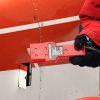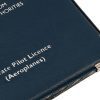Cessna 150 Aerobat
Cessna 150 Aerobat Overview
The Cessna 150 Aerobat is a specialized variant of the popular Cessna 150 series, designed for light aerobatic training and recreational flying. Introduced in 1970, the Aerobat retains the robust and economical design of the standard 150 while incorporating structural enhancements and design modifications to support aerobatic maneuvers. Certified for +6g and -3g, the Aerobat is capable of performing loops, rolls, spins, and other basic aerobatic maneuvers, making it a favorite for pilots looking to explore aerobatics without stepping into more complex or expensive aircraft.
Description
The Cessna 150 Aerobat shares many features with the standard Cessna 150 but is specifically tailored for aerobatic performance. It features additional structural reinforcements in the wings and fuselage to withstand the higher stresses associated with aerobatic flight. The cabin is equipped with dual shoulder harnesses and quick-release windows, ensuring safety and ease of egress during aerobatic operations.
Externally, the Aerobat is distinguished by its eye-catching paint schemes, often including bold stripes or checkerboard patterns that emphasize its aerobatic nature. The fixed tricycle landing gear is retained, providing stable ground handling, while the high-wing configuration ensures excellent visibility and ease of control during training or precision maneuvers.
Inside, the cockpit is straightforward and functional, featuring a basic instrument panel suitable for visual flight rules (VFR) operations. The Aerobat’s compact size and responsive controls make it an excellent platform for mastering fundamental aerobatic techniques.
Specifications
| General Specifications | Details |
|---|---|
| Manufacturer | Cessna Aircraft Company |
| Production Years | 1970–1977 |
| Role | Aerobatic Training, Recreational Flying |
| Capacity | 2 (Pilot and Passenger) |
| Length | 23 ft 11 in (7.29 m) |
| Wingspan | 33 ft 4 in (10.16 m) |
| Height | 8 ft 6 in (2.59 m) |
| Wing Area | 159 sq ft (14.8 m²) |
| Empty Weight | 1,110 lbs (503 kg) |
| Max Takeoff Weight (MTOW) | 1,600 lbs (726 kg) |
| Engine | Rolls Royce / Continental 0240 engine 130 hp |
| Propeller | Fixed-pitch |
| Fuel Capacity | 26 gallons usable (98 liters) |
| Range | 420 nautical miles (483 mi / 778 km) |
| Cruise Speed | 104 knots (120 mph / 193 km/h) |
| Service Ceiling | 14,000 ft (4,267 m) |
| Aerobatic Load Limits | +6g / -3g |
| Takeoff Distance (50 ft obstacle) | 1,385 ft (422 m) |
| Landing Distance (50 ft obstacle) | 1,075 ft (328 m) |
Performance
The Cessna 150 Aerobat delivers a blend of versatility and capability, allowing pilots to explore aerobatic flight while maintaining the forgiving characteristics of the standard Cessna 150. Powered by a Rolls Royce / Continental 0240 engine 130 hp, the Aerobat achieves a cruise speed of 104 knots and offers a range of 420 nautical miles, making it suitable for both aerobatic practice and short cross-country flights.
Certified for +6g and -3g, the Aerobat is capable of performing basic aerobatic maneuvers such as loops, barrel rolls, and spins. Its lightweight design and responsive controls make it agile and fun to fly, while its high-wing configuration ensures stable recovery from maneuvers. The aircraft’s low stall speed enhances safety during critical phases of flight.
While its aerobatic capabilities are impressive, the Aerobat retains the Cessna 150’s reputation for reliability and low operating costs. This makes it an attractive option for flight schools offering aerobatic training or private owners looking to explore aerobatics without breaking the bank.
Conclusion
The Cessna 150 Aerobat stands out as an affordable and approachable entry point into aerobatic flight. Combining the robust design of the Cessna 150 with enhancements for aerobatic performance, the Aerobat is an ideal platform for pilots seeking to expand their skills and enjoy the thrill of aerobatics while benefiting from the reliability and efficiency that define the Cessna brand.








